

|
| ČESKÁ REPUBLIKA | CZECH REPUBLIC |
| Moravskoslezký kraj | North Moravia and Silesia (Ostrava) region |
| Okres: Ostrava-město |
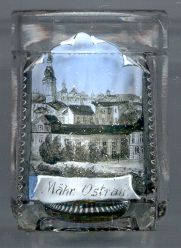 Ostrava is situated at an elevation of 220 m on the river Ostravica (Ostrawitza) near its mouth into the river Odra (Oder).
Moravská Ostrava (Mährisch-Ostrau) on the left bank of the Ostravica river had been mentioned first in 1267, Slezká Ostrava (Schlesisch-Ostrau)
on the other side of the river already had been mentioned in 1229.
(Moravská) Ostrava was located in a favourable location, on the so-called Amber Road, the ancient trading route leading from the Baltic see
through Central Europe down to the Mediterranean Sea.
Ostrava is situated at an elevation of 220 m on the river Ostravica (Ostrawitza) near its mouth into the river Odra (Oder).
Moravská Ostrava (Mährisch-Ostrau) on the left bank of the Ostravica river had been mentioned first in 1267, Slezká Ostrava (Schlesisch-Ostrau)
on the other side of the river already had been mentioned in 1229.
(Moravská) Ostrava was located in a favourable location, on the so-called Amber Road, the ancient trading route leading from the Baltic see
through Central Europe down to the Mediterranean Sea.
The discovery in 1763/67 of hard coal (lignite) in Slezká Ostrava was of crucial importance. Systematic coal mining was started in 1780 and was the basis for the industrial development of Ostrava during the 19th century. One of the oldest iron-working factories was opened in Vítkovice (Witkowitz) in 1829. When Ostrava was connected to the railroad Kaiser-Ferdinand-Nordbahn in 1846/47 (see also Bohumín), the station was built in Přívoz (Oderfurt, see below). Ostrava became the busiest railroad junction of the Austrian Monarchy. The mining, metallurgy, machining and chemical industries earned Ostrava the nickname 'Black Ostrava'.
In 1974–1976, 33 of the surrounding villages and communities, including Vítkovice and Slezká Ostrava, became part of Ostrava. Coal mining was terminated in 1994. Today, Ostrava is the administrative seat of the Moravskoslezký (Ostravský) region. With a population of about 320,000 inhabitants it is the third-largest city in the Czech Republic.
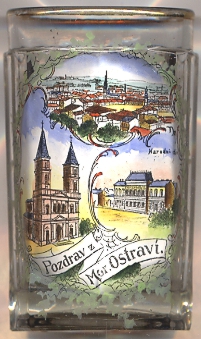
The  Cathedral of the Devine Saviour (Katedrála Božského Spasitele)
Cathedral of the Devine Saviour (Katedrála Božského Spasitele)
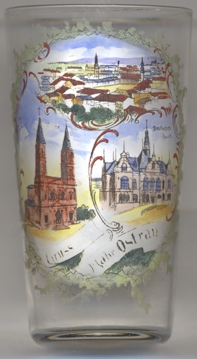
The  German House (German: Deutsches Haus) [near left, no. 4348: bottom right picture]
stood in Ostrava at Nádražní třída no. 951.
Its construction was decided in February 1892 as a reaction to the activities of the Czech population, which began to build its National House.
The building was designed in Dutch Renaissance style by the Ostrava architect Felix Neumann. The construction was completed in 1895. The building was
damaged during World War II in 1945. The extent of damage is not known today, but the Ostrava councillors decided in 1946 to demolish it completely.
[https://cs.wikipedia.org/wiki/N%C4%9Bmeck%C3%BD_d%C5%AFm_(Ostrava)]
German House (German: Deutsches Haus) [near left, no. 4348: bottom right picture]
stood in Ostrava at Nádražní třída no. 951.
Its construction was decided in February 1892 as a reaction to the activities of the Czech population, which began to build its National House.
The building was designed in Dutch Renaissance style by the Ostrava architect Felix Neumann. The construction was completed in 1895. The building was
damaged during World War II in 1945. The extent of damage is not known today, but the Ostrava councillors decided in 1946 to demolish it completely.
[https://cs.wikipedia.org/wiki/N%C4%9Bmeck%C3%BD_d%C5%AFm_(Ostrava)]
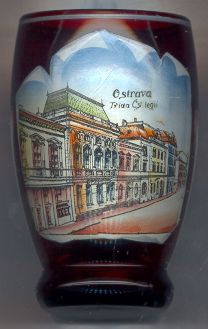
The  Jiří Myron Theatre (Divadlo Jiřího Myrona)
Jiří Myron Theatre (Divadlo Jiřího Myrona)
[http://wikimapia.org/9749150/National-Moravia-Silesian-theatre-Jiří-Myron-theatre,
http://www.ostrava.cz/de/turista/co-navstivit/prochazky-ostravou/mestske-pamatkove-zony,
http://www.ndm.cz/en_budovy.html,
http://www.ostravainfo.cz/index.php?akce=guide&mid=81&id=69&lang=3]
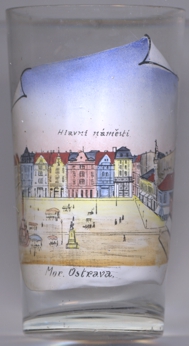
Glass no. 4407 [left] shows a view of Ostrava's central square, on the glass labeled as
 Hlavní
Hlavní
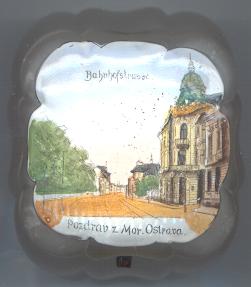
The picture on the glass box no. 828 [near left and below] shows the old
 Bahnhofstraße
Bahnhofstraße
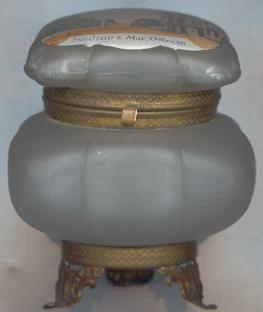
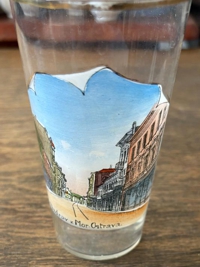
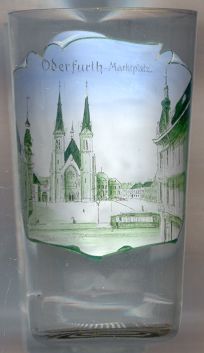
Přívoz (Oderfurt) was first mentioned in 1389. When the Kaiser-Ferdinand-Nordbahn railway was built, the station for Ostrava
was built in Přívoz (see above). Přívoz obtained the status of a town in 1900,
and since 1924 is part of the municipality of Ostrava.
The  parish church of Přívoz [left] was built in the 1890s by the Austrian architect
Camillo Sitte (1843–1903) who also built the town hall and several other buildings in the town.
parish church of Přívoz [left] was built in the 1890s by the Austrian architect
Camillo Sitte (1843–1903) who also built the town hall and several other buildings in the town.
The former German name of Ostrava was Mährisch-Ostrau, while Ungarisch-Ostra(u) was
the former German name of Uherský Ostroh.
![[scale]](lineal.jpg)